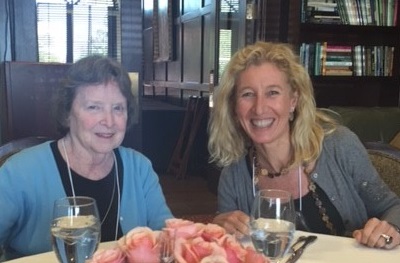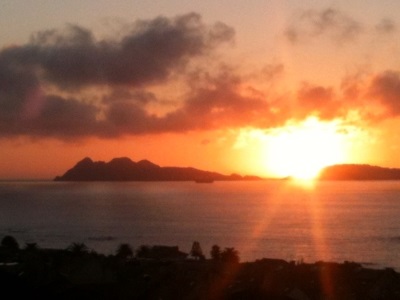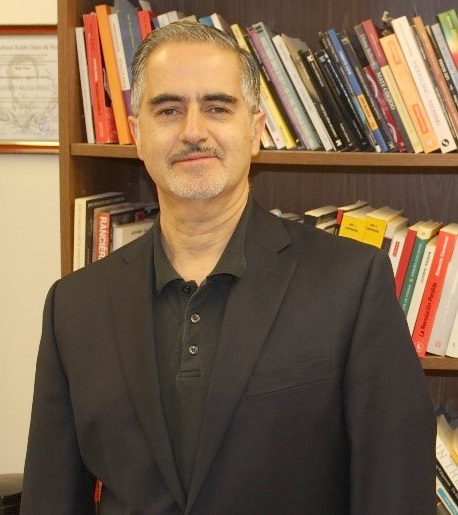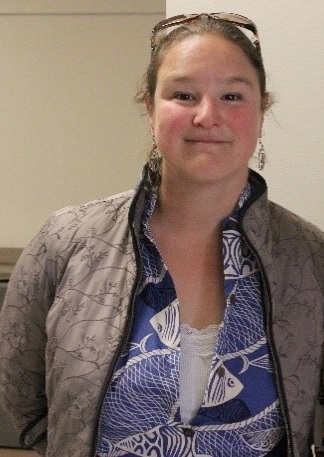Faculty Focus

CMLL Names New Associate Chair: Carmen Pereira-Muro, Associate Professor, Spanish

Dr. Pereira-Muro (right)
I was born in Vigo, in the Spanish region of Galicia, at the very green, lush (and rainy) northwest corner of the Peninsula. My great grandfather, who was a sea captain, and therefore speaking from experience, used to say that "Vigo has the most beautiful bay —'ría', as we call it-- in the world, after Rio de Janeiro". This has become part of my family lore, and we religiously repeat it to every visitor we have (if you come to visit, I will say it to you, and you better be amazed at the beauty of the ría de Vigo!). And if you come to Santiago de Compostela, my university town, where I studied Medieval Art History (yes, that was my first calling, Romanesque art), you will be able to see what García Márquez has called "the most beautiful square in the world, after Saint Peter in Rome" (he was talking about the Obradoiro, the magnificent square where the cathedral that keeps the bones of Saint James raises like a miracle of carved granite, blossoming with ferns and flowers). I guess we like to see our locality in a global perspective, even if we come in second place. It would not surprise you to know that Galicia is a nation of migrants. We are everywhere, on the moon, as one popular song says, and even in Texas.

Ría de Vigo
The path to Texas for this Galician immigrant was long, and passed through Madison (Wisconsin) and a dissertation on the maddeningly astute Emilia Pardo Bazán, a 19th- century feisty Galician who knew how to play every card in her hand to become part of the national canon as "one of the boys". And the 19th century became my unsuspected intellectual home, a fascinating period where everything was happening. Nations were being built right and left, gender codes (our gender codes, the ones still very much alive) were being defined, modernity was sweeping through and creating this double bind of nostalgia and faith in progress...Not to forget the amazing community of 19th century scholars I encountered in this country, good, brilliant, generous people, like my thesis director, Alda Blanco, my good friend Catherine Jagoe, and my more recent 19th century godmothers Lou Charnon-Deutsch and Maryellen Bieder (I am in the picture with her at the luncheon in her honor at the Kentucky Foreign Languages Conference this past April).
Place and community have been always important to me. At CMLL we all share that. Many of us come from different, faraway places, have been through many stages in life, have seen communities been built, we left them, we may miss them. We have one here now. This is how I feel about CMLL. It is my new place, my new people, and we all have so many things to share and to learn from each other. I am looking forward to a future of sharing in our vibrant, awkward, colorful community (unless you dare to tell me that your bay is better than my bay...well, only if you happen to be from Rio de Janeiro!).
Julián Pérez Retires from Texas Tech

Professor of Spanish, 1995-2015
A few parting words....
I arrived to the Texas Tech University in 1995. Now, twenty years later, I am ready to retire. This has been a great university for me. I always appreciated my students and felt liked by them. I believe this was a good match for me and Texas Tech University. Why? I like the mission of the public university. Texas does a great job trying to uplift the spirit of our students. I feel we serve them well. I like being close to the people. Before coming to this university I worked for a private elite college for several years but I did not feel comfortable there. I do not believe in social privileges, rather, I believe in hard work. During my lifetime, I have worked hard to support myself during the years as a student and later as a professional. I published over one hundred articles and seven books in my field: Spanish American Literature, particularly poetry and the essay. My work has not been in vain; monthly, my articles posted in Academia.edu are consulted by two thousand readers worldwide.
I grew up in Argentina and then came to America after finishing my undergraduate degree. My graduate studies were completed at NYU. My adaptation to this country has not been easy. I always appreciated the American work ethic. I have been treated fairly in this country and have been given many opportunities to learn and excel in everything I like. I have been never denied an opportunity because of my ideas or my interests, and I have never been asked to conform against my will. There are few countries in the world that can be this generous.
Because of that, I was always able to teach to the fullest of my abilities and I feel I planted a seed in many students. We shared with them all the secrets of poetry, which for me is the kernel of literature, religion and philosophy. Also we studied in full the modern Spanish American essay, a genre that represents the new spirit of Free Thinking in our societies. In my undergraduate classes, I always tried to communicate my enthusiasm and passion for my language and my culture.
Education is a collective enterprise. It would be impossible without the large number of people who dedicate their lives to this endeavor. All my colleagues and companions at work have been fantastic – cooperative, intelligent, effective and generous. This includes every person who works in the Department. I am a happy man and I feel good about myself in this moment. I am ready now to go back to my country, Argentina, where I will pass my golden years. I believe in retirement and I have plans for my future years. My goals include: writing as much fiction as I can, to travel and to visit far away parts of the world that are intriguing to me.
I would like to thank every one of you who made all this possible. I will carry with me warm memories of all these years. Good luck to all in your mission.
Hannah Friedman, Assistant Professor of Classical Archaeology

My first archaeological dig was in Jordan, a predecessor project to the Barqa Landscape Project. We students were collected at the airport and brought down to the Faynan, a bumpy hot 4 hour drive. It was July and the air was a sweltering 120 degrees. We arrived at the village overwhelmed, sleep deprived, and grumpy. In an attempt to acclimatize and reset our internal clocks we were "taken" on a 4 hour walk in the Wadi to see famous archaeological sites. No sleep, start walking. My professors remember showing me a pre-pottery Neolithic site, its economy at the time was a newfangled thing called agriculture. However, in the distance was another site, square and majestic. I asked "what is that?" Dismissively I was told, "...Roman." Despite the riveting lecture on the prehistoric period, a siren song was luring me away. Apparently in my sleep deprived state, I was unconsciously shuffling towards the Roman structures the entire time. A professor watching me in amusement apparently swore and said "we lost another one to Classics." He was right.
At UC San Diego I received my received my BA in Archaeology and Latin. I then decided to continue my studies in England at the University of Leicester for my MA and PhD. Needless to say, the transition from Southern California to the East Midlands was difficult. After my PhD I was a research assistant for the Oxford Roman Economy Project for two years. Our lofty goal was to study the fundamentals of the Roman imperial economy and analyze major economic activities (including agriculture, trade, commerce, and extraction).
I was proud to join Texas Tech in 2012 in the Classics Program at CMLL. Since my arrival I have taught archaeology and culture classes including World of Rome, Food of the ancients, Roman Archaeology, World of the Near East, as well as Latin. I also have led two summer study abroad groups.
My research focus is the Roman Economy with a special interest in the mines of the ancient world. To further my economic investigations I am a co-director for the Barqa Landscape Project mentioned above. This area is renowned for its copper mines and long history of human occupation. It is a field school where students excavate sites. Our most recent project was a rescue excavation of a Chalcolithic site which was badly damaged by a hundred year flood event that occurred May 2015. While not Roman, it provided evidence of one of the earliest recorded instances of human manipulation of copper ore.
I am currently in the planning stages of a dig in Northern Italy near Turin. This project would be in conjunction with the University of Leicester, Professors Pim Alison, Lin Foxhall, and Katie Huntley. It would examine a Roman town and its hinterland through survey, remote sensing, and eventually excavation. Through this excavation I hope to offer study abroad opportunities to Tech students in the future.
Classical & Modern Languages & Literatures
-
Address
CMLL Building, 2906 18th St, Lubbock, TX 79409 -
Phone
806.742.3145
